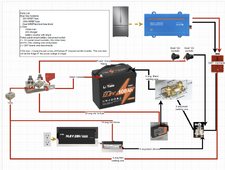HOU_Castle
Learning Everyday....
When you purchase an inverter, some inverter suppliers supply cable/wire to be connected from battery terminals to the inverter terminals.I'm sorry... What wire are you referring to ?
Those cables/wires need to be sized correctly or you will end up with fire hazard. Plus, you need to install breaker to prevent from burning the inverter wires/cables.





